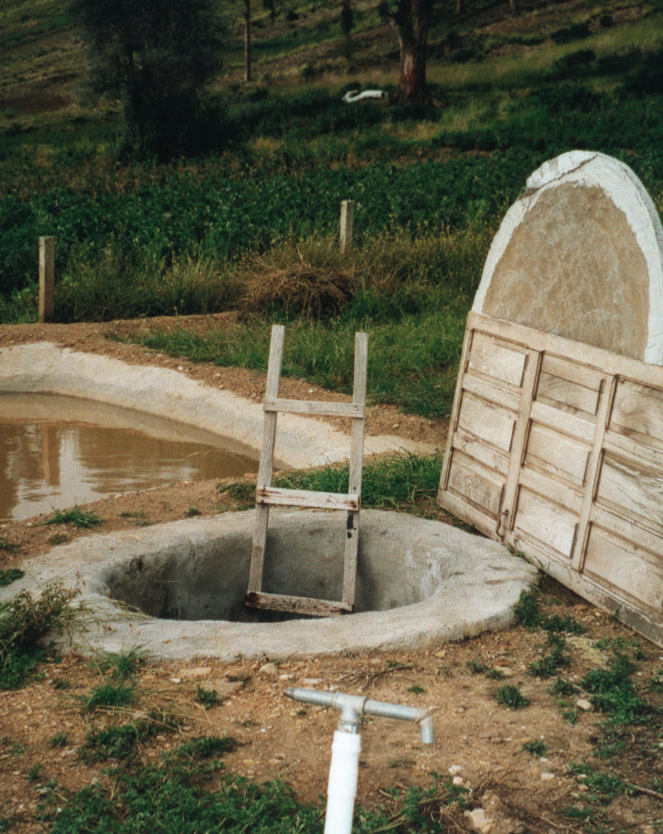Difference between revisions of "Underground tank"
| Line 1: | Line 1: | ||
| + | {{stub}} | ||
| + | |||
[[Image:Underground_tank_icon.png|right]] | [[Image:Underground_tank_icon.png|right]] | ||
Revision as of 12:31, 29 April 2009
| |
Where access to groundwater is limited, rainwater harvesting in underground tanks can be an effective and low-cost alternative. Water stored in the wet season can be used in the dry season and lifted from the tank with a rope pump or with a deep well pump, which can elevate water up to 30 m.
These tanks can be constructed of concrete blocks. The tanks are partly (1.5 m) build below the soil surface. These tanks can store up to 20 000 liters of water, used for domestic use, cultivation.
| Advantages | Disadvantages |
|---|---|
| |
|
Contents
Capacity
Depending on the design, varying from 3 500 to 20 000 liters.
Application conditions
The area should be suitable for rainwater harvesting.
Maintenance
- Removal of debris and overhanging vegetation from gutters and the roof (preventing stagnation of water in the gutters).
- Physical inspection and repairing cracks with cement.
Considerations
- Basic water quality testing is recommended during the first year, with further testing when water quality is in doubt. Eg. the 'HACH' pillo test, costing about US$ 1 per test.
- Treatment to manage microbiological quality.
Costs
Material costs for EMAS tanks consist of sand and four 50 kg bags of cement for each tank. Subsurface ferro-cement tanks of 60 m3 costs about US$ 1 900.
Examples and initiatives
The Brazilian government, with support from organisations such as UNICEF and IRCSA (International Rainwater Catchment Systems Association) started a programme to construct one million rainwater tanks in Brazil.
With regard to the concrete block tanks, 40 community water tanks (supporting a few families each) were implemented successfully. Following this success, another 80 concrete block tanks will be build at household level.
Practica foundation is testing various options for low-cost storage and groundwater recharge like the "Reed cement tank" and the "Tube recharge".
Underground tank manual
This Underground tank installation Manual by Tankmasta explains all the steps needed to build an underground tank.

|
External links
- General www.rainwaterharvesting.org www.unep.or.jp www.rainfoundation.org
- Recharge www.practicafoundation.nl
- Storage www.emas-international.de

